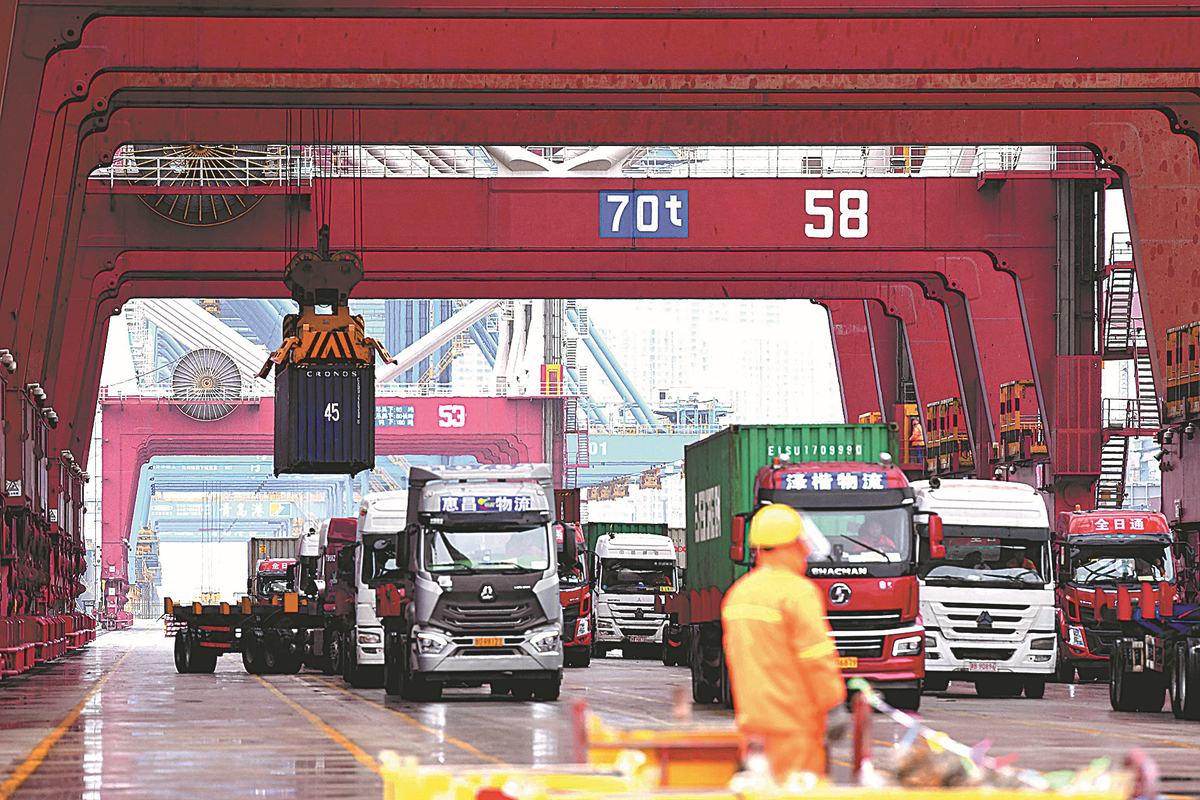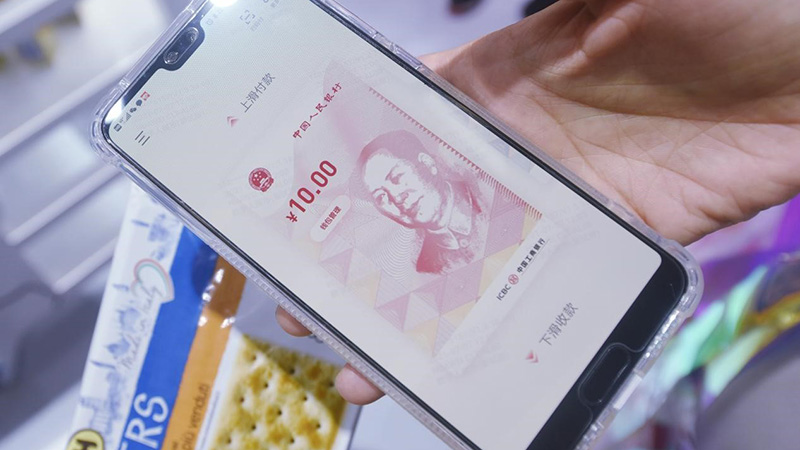Companies grapple with rising costs (2)
Trucks line up at a foreign trade container terminal of Qingdao Port in Shandong province on March 17. China will offer more financial help to traditional exporters. [Photo by Yu Fangping/For China Daily]
The good news is, the central government has taken remedial action immediately.
During an executive meeting of the State Council, China's Cabinet, chaired by Premier Li Keqiang on March 21, the central government announced it will refund around 1 trillion yuan worth of value-added tax credits, which is nearly two-thirds of total VAT credit refunds this year, to micro and small enterprises and self-employed households as general VAT payers across all sectors. The purpose is to help market entities weather the difficulties, stabilize market expectations and ensure employment.
Liu Kun, China's finance minister, said in late February that the government will carry out tax and fee cuts of a more sizable scale this year, hoping to generate a greater sense of gains for market players.
The National Development and Reform Commission and 11 other central government departments released a policy document on Feb 18 to promote steady growth in the industrial sector, reiterating the goal of stabilizing the overall economy. More financial help will be rendered to traditional export companies, cross-border e-commerce platforms and logistics service providers to set up overseas warehouses. Local governments as well as import and export chambers of commerce will help small and medium-sized enterprises to seek direct contacts with shipping companies, according to the document.
Amid all this, everyone concerned is keen to know: Will the People's Bank of China, the country's central bank, change its monetary policy to address mounting difficulties so that China can successfully attain the 5.5 percent GDP growth target this year?
Zhu Haibin, JP Morgan's chief China economist, said the rising global commodity prices will intensify the inflationary pressure facing China. But the pressure is unlikely to be massive enough to significantly restrict the country's macroeconomic policy space.
China's factory-gate inflation will abate by a slower slope because of the spike in commodity prices, said Zhu, who has raised the forecast for China's annual producer price index growth by 0.8 percentage point to 5.4 percent.
Consumer inflation will also be affected, but only in a moderate way. Zhu said he expects China's annual CPI growth to come in at 1.7 percent, higher than 0.9 percent last year and still well below the government's target of around 3 percent.
The overall stable consumer inflation will allow the PBOC to ramp up support for the Chinese economy, by way of cutting both the interest rate of its medium-term lending facility, a key policy rate known as MLF, by 10 basis points and the reserve requirement ratio by 50 basis points in the coming months.
Such measures will be necessary to achieve this year's GDP growth target of around 5.5 percent, given the multiple challenges posed by a real estate slowdown, higher import costs and downside risks of net exports, Zhu said.
Lu Ting, Nomura's chief China economist, said a spike in commodity prices amid geopolitical tensions may influence China's economy mainly through three channels-higher inflationary pressure, narrower trade surplus and marginal depreciation pressure on the Chinese yuan.
As a major importer of raw materials, China may have to pay more for imports due to soaring international energy and food prices, which could shrink the country's trade surplus and weaken the country's currency slightly, Lu said.
Also, rising global oil and gas prices could sustain industrial goods prices relatively high in China, dampening the willingness of companies to invest and eroding the effectiveness of macroeconomic policy in expanding domestic demand, he said.
 |  |
Photos
Related Stories
- Albania witnesses sharp price rise of daily necessities
- Japan's household spending rises 1.1 pct on year in February, COVID-19 weighs
- S.Korea's headline inflation hits 10-year high on soaring energy price
- Could U.S. markets remain high despite surging inflation?
- Two-thirds of U.S. Californians report experiencing financial hardship due to inflation: survey
Copyright © 2022 People's Daily Online. All Rights Reserved.











